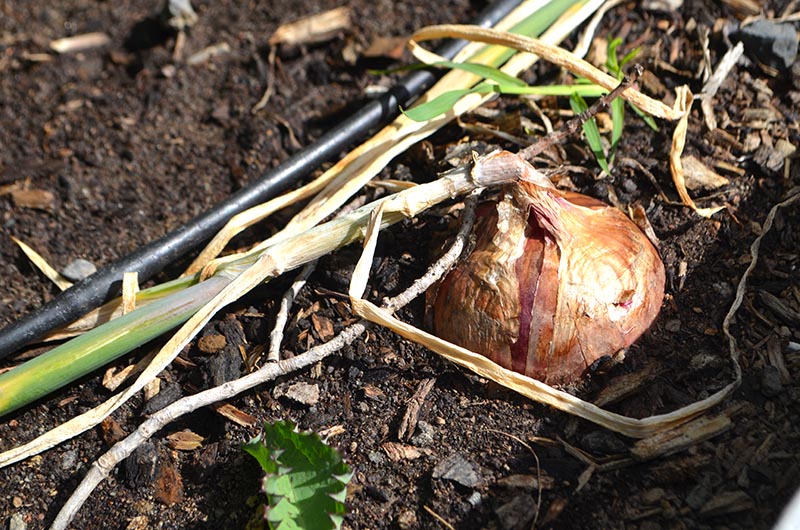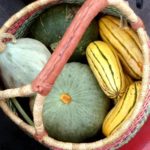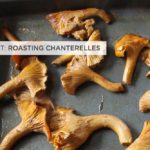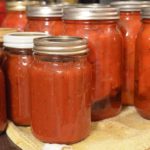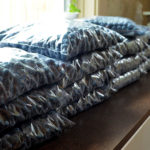I planted two different varieties of onions in early spring along the perimeter of our raised beds: red onions and Walla Walla sweets. You know it’s time to harvest onions when the greens start to die back, which usually happens in late summer. That means the plant is done sending it’s energy from the greens down into the ripening bulb. I just recently pulled almost my entire crop of onions, leaving the ones with upright green growth in the beds to finish ripening.
Portland had a strange growing season and my Walla Walla onions suffered the consequence. We had an unusually hot spring that cooled down briefly, then proceeded to heat up again. That brief cool spell confused the Walla Wallas into thinking it was time to go dormant – meaning, they thought it was wintertime. When the heat returned after that cold spell this spring, the onions thought it was next year and bolted.

This onion has “bolted”, forming a thick central stalk that will flower
When an onion bolts, it develops a thick middle stalk that flowers to create seed. It’s quite pretty, but the bolting process ruins the bulb. It becomes fibrous and inedible. I left a couple flowering onions in the garden so I can save their seeds for next season. The red onions, however, were more bolt-resistant – not a single one formed a flower stalk.

Budding onion flowers on our bolted Walla Walla onions
It’s always fun to grow two varieties of a crop at a time – you learn little lessons like this. Apparently Walla Wallas are more sensitive to bolting than the red onion I grew. I’ll record that in my garden journal so I remember come planting time next year. It doesn’t mean I won’t grow Walla Wallas – it just means I’ll never plant only that onion variety in case we have another year of fluctuating temperatures.
To harvest the onions, I pulled them gently from the soil and rinsed off the excess soil. Walla Wallas are a mild onion, which should be eaten over the next few weeks rather than stored for months. We will eat the few that didn’t bolt by using them on burgers, sandwiches or caramelizing them. Red onions are good for storage, so those plants I will “cure” to keep through winter.

Freshly pulled onions
The onions are now resting out of the sun on a table with good ventilation in a single layer. The red onions will cure there for 2-4 weeks. The best temperature to cure them is quite warm – somewhere around 75-85 degrees with a nice breeze. The Walla Wallas are just there to dry, not cure. So once dry, we will move them inside and start using them up.
Once cured, storage onion leaves, or “necks” will be completely dry. You can braid them together to hang or just trim the necks and store in a container with ventilation holes. A cardboard box with holes, large basket or mesh bag work well. Keep the storage onions somewhere cold (35-40 degrees), dry and out of sunlight for maximum storage life. Mine will be stored in our basement in a makeshift cellar where I keep our excess canned goods. In perfect conditions you can store onions for almost a year, but I will likely use mine in the next six months.

Curing our storage onions
Onions are generally an easy crop to grow and harvest. We use a ton of them throughout the year and it seems like I can never grow enough. I would love to hear whether you make room for them on your homestead, what your favorite varieties are and if you have any tips or tricks to add. Tell me about it in the comments below!
